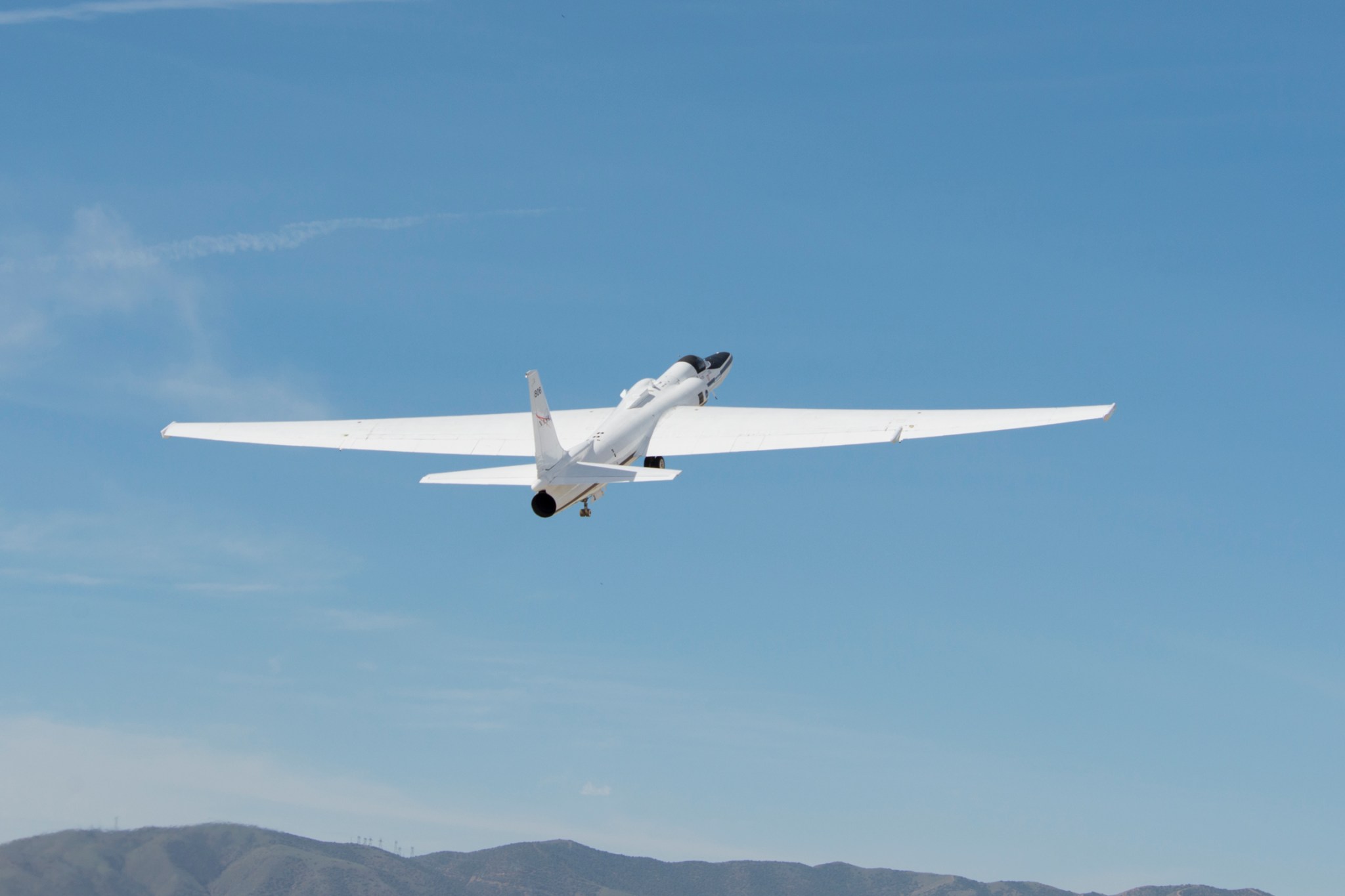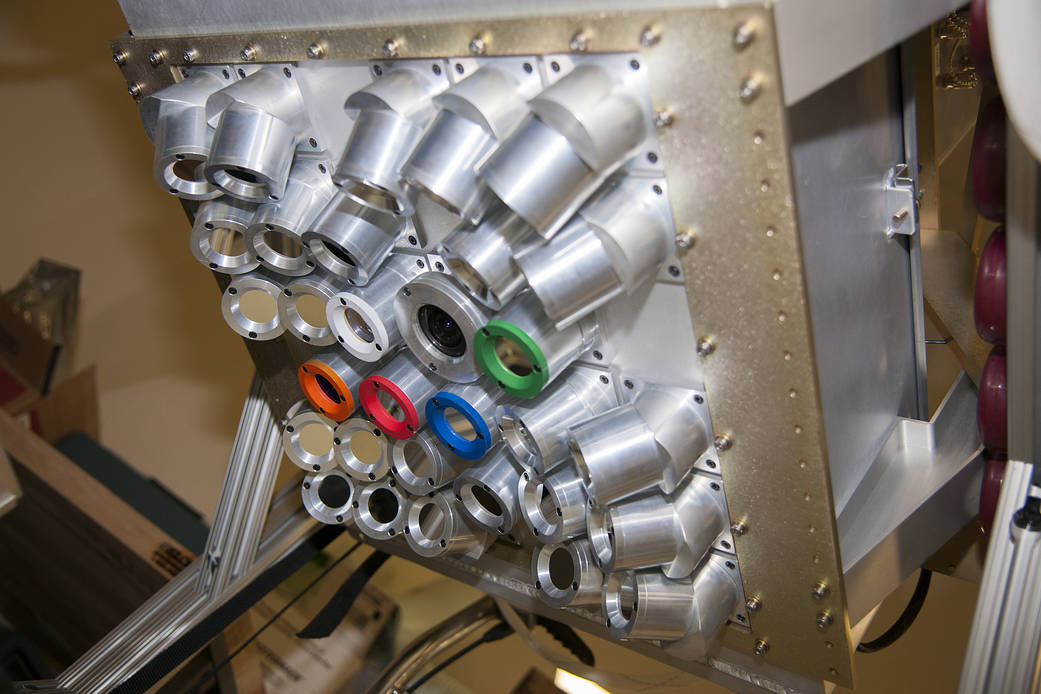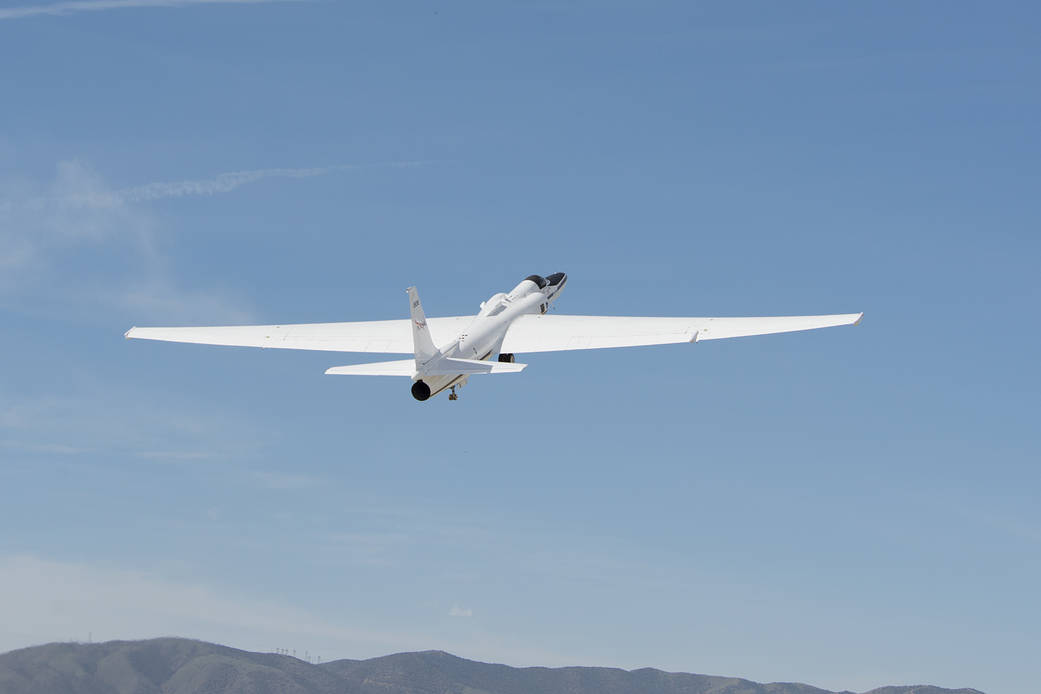The National Oceanic and Atmospheric Administration’s (NOAA) newest weather satellite, Geostationary Operational Environmental Satellite-R-series, or GOES-R, launched into orbit Nov. 19. Now that it has reached its final designated orbit, GOES-R will be known operationally as GOES-16. Over the next six months, NASA will be working with NOAA to calibrate sensors and validate data transmitted down from the satellite using NASA’s ER-2 high-altitude aircraft.
During early November, the ER-2 flew test flights to calibrate and validate two new instruments, called the Geostationary Coastal and Air Pollution Event Airborne Simulator (GCAS) and the Fly’s Eye Geostationary Lightning Mapper, GLM, Simulator (FEGS).
GCAS will observe nitrogen dioxide created by lightning, while FEGS will observe and map lightning strikes. Data collected will be used to support the GLM sensors on board GOES-R. GLM will collect information such as the frequency, location and extent of lightning discharges to identify intensifying thunderstorms and tropical cyclones.
“FEGS is designed to see lightning in thunderstorms within the GLM field of view to test and validate that GLM is seeing the lightning it should see,” said Hugh Christian, the University of Alabama Huntsville lightning group lead.
FEGS includes 30 photometers — instruments that measure the intensity of light — set to several specific wavelengths of light, plus a wide-spectrum camera. Twenty-five of the sensor instruments are tuned to see light emitted by neutral oxygen when it is heated by lightning, which is the same wavelength of light that the GLM instrument will detect.
In addition to FEGS and GCAS, the instrument package aboard the ER-2 will include sensors to detect gamma ray flashes caused by lightning, and to measure the change in the Earth’s electric field from before the lightning process begins until it ends. Other instruments will measure the atmosphere’s conductivity to help scientists calculate the electrical current a storm is generating.
The formal ER-2 science flights will take place between March and Mary of 2017 in two phases. During phase one, flights will be operated from the aircraft’s normal base of operations at NASA Armstrong Flight Research Center’s Building 703 in Palmdale, California. Phase two, flights will be based out of Warner Robbins Air Force Base in Georgia, where thunderstorm conditions can be more easily found and observed.
Kate Squires
Public Affairs Specialist
NASA Armstrong Flight Research Center





























